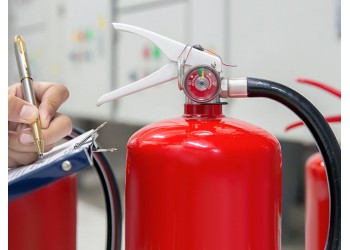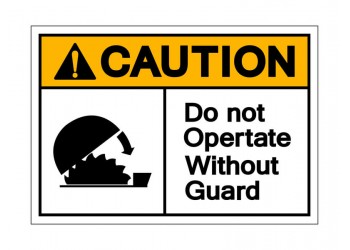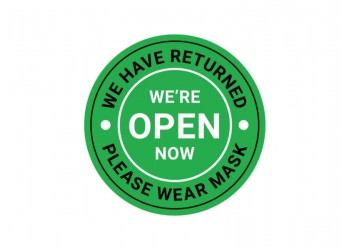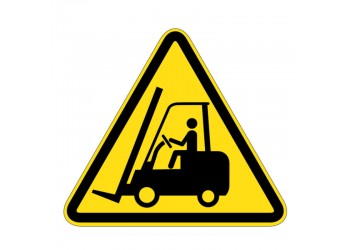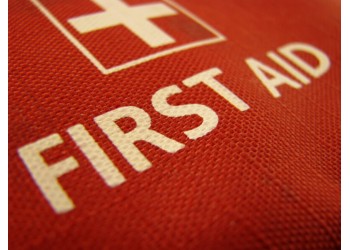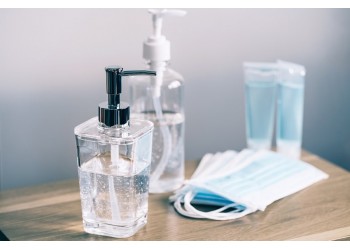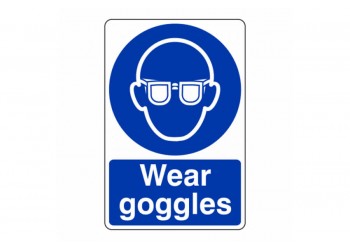While in the midst of the coronavirus pandemic or into the near future, social distancing has become ingrained in our current everyday life. As a means to prevent the spread and protect the health and safety of many, we are being asked to stay 2 meters apart at all times. For businesses, both those that have opened and those still in the planning stages, implementing this social restriction poses a set of unique challenges. But with all aspects of safety in the workplace, the right signs can offer a cost-effective and successful solution. Our guide will help your business open successfully, once allowed.
What is the 2-meter rule?
In a means to prevent COVID-19 from spreading quickly through our nation, the 2-meter social distancing rule was introduced at the beginning of lockdown. The idea assumes that this virus is primarily spread through respiratory droplets and that keeping this specified distance will significantly reduce the risk. As of the 4th July, Prime Minister Boris Johnson announced that the 2-meter rule would be replaced with a 1-meter+ guidance, acknowledging that the original distance was often hard to replicate.
Even with this relaxation, the social distancing restriction still places unique challenges on business owners. From those with brick-and-mortar shops to jobs that require close contact with customers, how will the logistics work in line with this?
How can this be implemented in businesses?
The HSE has produced guidance for employers with appropriate measures that should be taken to continue working safely during coronavirus. And, via the GOV.uk website, you can find a multitude of guides to help your business reopen. Here, we will summarise some of the key points you should consider.
Practical actions pre-opening
Before your business opens up, it’s important to discover the new hazards posed and implement precautions to minimise these. The following steps are advised by the government:
- Carry out a COVID-19 risk assessment
Using the HSE guidance, walk around your workplace and identify the areas that present a risk. Consider the virus during your review – where could it be spread? Where is close contact necessary? How many handwashing facilities do you have available etc?
- Develop appropriate cleaning, handwashing and hygiene procedures
Encourage employees to follow the government’s guidance on handwashing and ensure you provide hand sanitiser readily around the building. All items that are touched on a regular basis should be disinfected and cleaned frequently.
- Where possible, ask employees to work from home
This isn’t always possible but, even if it’s only select people in your team, encouraging people to work from home minimises the risk of infection spread. Where possible, provide the right equipment, include them in communications and ensure they are able to do their job remotely.
- Maintain the 2m social distancing guidance, where possible
During the risk assessment, consider ways to implement the social distancing guidelines into your workplace. This could mean moving desks apart, eliminating shared workstations, using floor tape to mark areas, implementing a one-way system and using safety signs to remind employees of the new rules.
- Where employees cannot social distance or work from home, manage the risk of transmission
If you have to open and employees are unable to distance, you need to take measures to reduce the chance of illness. Use screens or barriers for face-to-face meetings, encourage back-to-back working, stagger arrival and departure times and minimise exercises that need direct exposure as much as possible.
There are a number of industry-specific guides also available on the gov.uk website including ones for:
COVID-19 and Social Distancing Safety Signs
To support your business and help the UK economy to get moving once more, we have designed and manufactured a range of social distancing and coronavirus-specific safety signs. Suitable for a wide variety of businesses, they act as reminders for employees and customers.
COVID-19 Hygiene Safety Signs
Designed to ensure employees and customers remember to maintain a high level of hygiene, these mandatory safety signs are hardwearing and easy to install. We have a variety on offer, from ‘Catch It, Bin It, Kill It’ vertical signs and Wash Your Hands For 20 Seconds Sign and identifying signs for Hand Sanitiser.
Fit these signs near all handwashing stations, ensuring they are highly visible and legible. Also, consider the high contact areas where hand sanitiser is vital and use signs to alert readers of its presence.
COVID-19 Social Distancing Signs
Suitable for use in the workplace, our social distancing signs act as a reminder of the 2-meter rule. They can be used to advise avoiding contact with others or to specify the maximum people permitted to work in a certain area. We have also manufactured options for customer-facing businesses, like our ‘Queue Here and Wait To Be Called’ or the ‘We Are Open For Business’ sign.
Use to help ensure compliance with the current rules. Again, these signs should be visible and clear, allowing the information to be read. Place them in areas where foot traffic tends to build up or close contact is likely to occur.
COVID-19 Workplace Directional Signs
Implementing a one-way system in the workplace is one of the recommendations for businesses as we begin to reopen. Our directional signs help to specify information such as Entry Only, Please Wait Here and Arrows for Up, Down, Left and Right.
When used, place them at eye height next to doorways or in relevant positions.
Temporary Anti-Slip Coronavirus Floor Graphics
One way to ensure compliance with the social distancing rule is through our anti-slip floor graphics. Manufactured from British Safety Standard non-slip laminate, these signs are easy to apply and remove when no longer required. They are another visual cue to remind employees and customers of the new regulations. Choose from simple Please Keep Behind 2m Safety Line designs to Please Stand Here and Keep Your Distance signs.
Use on walkways or areas where queues generally build-up to emphasize safety.
COVID-19 Social Distancing Floor Stand
Another temporary option for many businesses are our floor stands that have been printed with social distancing messaging. These can be used in settings where queues or groups of people move regularly or in applications that don’t have a set location. Again, the designs include everything from Please Stay Within Marked Lines and One Way Aisle through to Please Queue Here options too.
Our team stays on top of government regulations and design signs to suit the needs of customers from various industries. If you have any questions about our COVID-19/Social Distancing range or have a bespoke requirement for a sign, get in contact with the team here today who will be happy to help.
